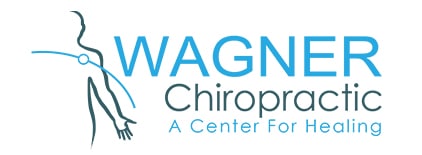Are You Listening to Your Body? Muscle Testing As a Way to Talk to Communicate with the Body

Did you know that with muscle testing you can pose questions to the body and the body can answer? This post-graduate training for doctors of chiropractic is called Applied Kinesiology(AK)(1). AK is a technique in alternative medicine and chiropractic which enables the physician to diagnose illness or choose treatment by testing muscles for strength and weakness. Scientific studies have shown this technique to be a clinically useful tool for the assessment and diagnosis of the musculoskeletal system, nervous system, organ systems, and bio-energetics of the body, and we use the technique at Wagner Chiropractic in Eustis.
AK’s basic notion is that every organ dysfunction is accompanied by a specific muscle weakness which enables energetic deficiencies to be targeted through muscle-testing procedures. The manual muscle testing (MMT) performed in AK is performed only as part of a system of diagnosis that can bring forth valuable information.
With AK we test for muscle strength resistance against the doctor’s muscle test challenge. Nutritional deficiencies and food allergies, for example, can be detected by having the patient chew on them or hold them on the tongue until salivation and then testing for muscle strength against pressure applied. (Some applied the episternal notch(2) at the top of the sternum).
If the patient’s muscle stands up to pressure, we considerate it to be strong or “locked” indicating an affirmative response. When muscles give way to pressure they are considered weak or “unlocked” and indicate a problem. Applied kinesiologists consider the “locked” as “strong” or a positive test and the “unlocked” as “weak” or a negative test.
In the book, Applied Kinesiology: Muscle response in diagnosis, therapy and preventive medicine, authors Valentine and Valentine aptly describe how AK works this way:
“In a brief session, a competent applied kinesiologist can evaluate your various body functions by testing your muscles, and then present you with a fairly accurate picture of how your glands, organs, lymphatic system, nervous system, circulation, and muscle and bone structures are working.”
They go on to describe the applied kinesiologist and purpose of AK:
“The practicing AK [applied kinesiologist] is a graduate chiropractor who can explain to you how your glands and organs appear to be functioning with specific muscle tests. He can suggest nutrition to help improve various conditions, and he can demonstrate with your muscles that you probably need particular nutrients. He can correct problems in your spine and in joints, and can stretch or compress muscles to improve your structural condition. He may massage certain junctures of nerve, lymph, blood, and acupuncture meridians to stimulate glandular or systemic activity. He can advise you on how to stay healthy and he will pay particular attention to your posture and your feet.”
There is considerable evidence about the reliability and validity of MMT as an examination tool. Even the American Medical Association has accepted MMT/AK as a reliable tool and advocates its use for the evaluation of disability impairments.
“MMT (manual muscle testing) is the most commonly used method for documenting impairments in muscle strength. Limited muscle testing methods are taught in a number of chiropractic schools around the world, however in 2006 a major ‘stand alone’ chiropractic technique that employs MMT for the evaluation of patients known as applied kinesiology chiropractic technique (AK), turned 42 years old.”
- SCOTT CUTHBERT AND GEORGE GOODHEART, JR. IN ON THE RELIABILITY AND VALIDITY OF MANUAL MUSCLE TESTING: A LITERATURE REVIEW
The chiropractic profession's use of manual muscle testing and AK chiropractic technique is one of many diagnostic methods or tools employed by few doctors of chiropractic. The study and application of applied kinesiology is a dying art in the chiropractic profession. What is so special about AK doctors is that they are looking at a holistic view of the patient.
Applied kinesologists work through what is called the triad of health perspective, the three-sided nature of every human being composed of structure, chemistry and mentality. All three are components in many functional disorders or conditions. AK-associated treatments range from spinal and joint manipulation and realignment, craniosacral therapy(3) and use of energy points on the body called reflex points, referred to as neurolymphatics.
Physical therapists and others in the medical profession often use muscle testing. The technique is rarely given credit to the chiropractic genius founder Dr. George Goodheart(1). As science and research catch up with chiropractic and its many techniques that bring the body in balance, applied kinesiology is a valuable technique used by Dr. Ramah Wagner at Wagner Chiropractic.
- The theory of AK was developed by George Goodheart, Jr., a Detroit, Michigan chiropractor. “Many of the components in this method were discovered by serendipity and observation. In 1964, Goodheart claimed to have corrected a patient's chronic winged scapula by pressing on nodules found near the origin and insertion of the involved serratus anterior muscle. This finding led to the origin and insertion treatment, the first method developed in AK. Successive diagnostic and therapeutic procedures were developed…” —R. H. Gin and B. N. Green in George Goodheart, Jr., D. C., and a history of applied kinesiology
- between the clavicles
- a manual therapy intended to relieve pain and tension by gentle manipulations of the skull regarded as harmonizing with a natural rhythm in the central nervous system
Endnotes:
“On the reliability and validity of manual muscle testing: a literature review.” Chiropractic and Osteopathy, U. S. National Library of Medicine, https://www.ncbi.nlm.nih.gov/pmc/articles/PMC1847521
Valentine T, Valentine C. Applied Kinesiology: Muscle response in diagnosis, therapy and preventive medicine. Rochester, VT: Thorsons Publishers, 1987. Written with help from Douglas P. Hetrick, D.C., and Davis S. Walther, D.C.
American Medical Association. Guides to the Evaluation of Permanent Impairment, 5th Edition. 2001:510.
Gin, R. H., and B. N. Green. “George Goodheart, Jr., D.C., and a History of Applied Kinesiology.” Current Neurology and Neuroscience Reports., U.S. National Library of Medicine, June 1997, www.ncbi.nlm.nih.gov/pubmed/9200049.
OFFICE HOURS
Monday
7:15am - 4:30pm
Tuesday
7:15am - 4:30pm
Wednesday
Closed
Thursday
7:15am - 4:30pm
Friday
7:15am - 3:30pm
Saturday
Closed
Wagner Chiropractic
2775 South Bay Street
Eustis, FL 32726
(352) 589-5443



